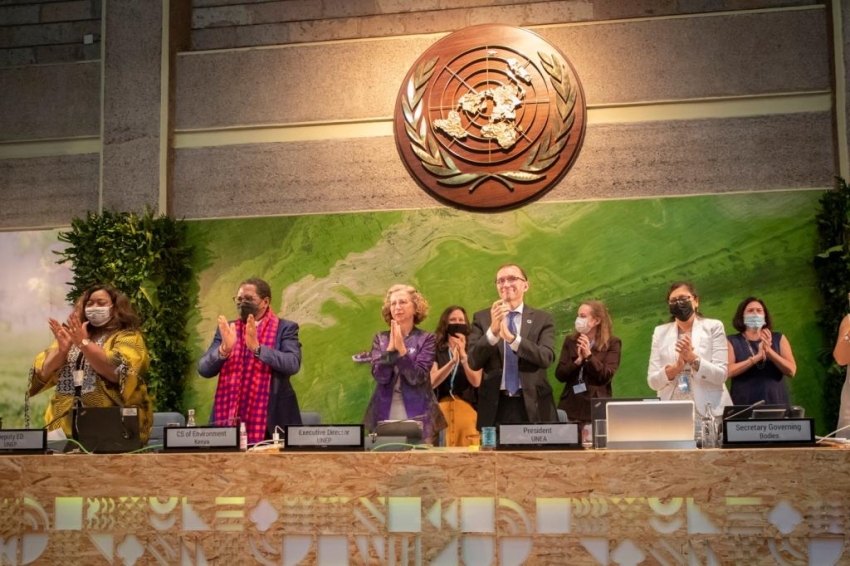FIXING THE PLASTIC POLLUTION PROBELM AND THE RESULTS OF THE JUCT CONCLUDED UNEA 5.2 ASSEMBLY: IMPLICATIONS FOR AFRICA
In context, the globe is under the weight of diverse environmental challenges that threaten human and economic development towards realizing the Sustainable Development Goals (SDGs) and recovery from the COVID-19 emergency. An estimated 11 million tonnes of plastic waste flow into the ocean every year as I pen this article. By 2025, 100 million to 250 million metric tons of plastic waste could enter the sea each year. Between 2021 and 2040, the cumulative cost of managing plastic waste is estimated to be US$670 billion. If we fail to take action, this inaction will pose a financial risk to economies and businesses across the globe, estimated at $100billion every year by 2040. These costs manifest as damage to livelihoods and economic industries. The newsletter covers results of UNEA 5.2 on plastic ban and how to fix the menace.
In context, the globe is under the weight of diverse environmental challenges that threaten human and economic development towards realizing the Sustainable Development Goals (SDGs) and recovery from the COVID-19 emergency. An estimated 11 million tonnes of plastic waste flow into the ocean every year as I pen this article. By 2025, 100 million to 250 million metric tons of plastic waste could enter the sea each year. Between 2021 and 2040, the cumulative cost of managing plastic waste is estimated to be US$670 billion. If we fail to take action, this inaction will pose a financial risk to economies and businesses across the globe, estimated at $100billion every year by 2040.These costs manifest as damage to livelihoods and key economic industries such as fishing and tourism, clean-up costs and threats to the health of the populations. On March 2, 2022, representatives from 175 nations worldwide took a historic step toward ending pollution. The United Nations Environment Assembly voted to task a committee for forging a legally binding global treaty on plastic pollution by 2024.
Why is the Treaty important?
Just consider this – the chemicals in plastic have been associated with severe health problems like hormone-related cancers, infertility, neurodevelopment disorders, among others. The plastic production process exposes communities to over 170 toxic chemicals – with children being most vulnerable. Combining the production and waste incineration of plastics is projected to emit the equivalent of 615 coal plants by 2050 to escalate climate change further.
All these risks notwithstanding, the global plastic market continues to grow. It was valued at $579.7billion in 2020 and projected to grow at a compound annual rate of 3.4% up to 2028. What the globe then needs to do is to prevent the release of all these plastics into the environment where they cause harm to human & environmental health and maintain them more in the production cycle – what we call a circular economy. Currently, less than 10% of all plastic waste globally is recycled. In Africa, the figure is much lower at about 4%. Recycling these plastics portends between $80 – 120billion in income, enterprise, and economic growth opportunities globally through the packaging industry alone.
The treaty in question comes to put in place a regulatory framework to actualize this much-needed circularity. It establishes an intergovernmental negotiating committee (INC) with a mandate to negotiate a legally binding global agreement to address plastic pollution towards reducing the discharge of plastics into the environment by covering all stages of the plastic life cycle and adopting a circular economy approach to plastics. It provides a legal & policy framework within which investments in recycling and other techniques towards beating plastic pollution can be prioritized across the globe A key attribute is that the resolution is “international” or “transboundary”. This is very important to note because plastic waste is transboundary. Plastic litter knows no boundaries. When realized in the coastlines of one country, it ends up causing effects on the shores of neighbouring countries and globally.
What does it mean for the plastic manufacturers and producers moving forward?
It means one thing – “alternative opportunities”. Recycling alone portends up to $120 billion in enterprise opportunities globally. Reusing & recycling also generates energy savings – estimated up to 87%. Those making plastics should now diversify towards recycling to tap these opportunities. In addition, as more countries put forward commitments to minimize emissions in line with the net-zero targets of 2050, carbon taxes are beginning to take effect, and plastics will be one of the areas most targeted, considering that they are projected to contribute up to 20% of emissions. Incorporating measures that reduce the sting of plastics – such as recycling & reuse – will go a long way in reducing their carbon tax liabilities. This is vital for manufacturers of plastic items to be able to align themselves with the set standards and regulations.
Download our latest newsletter to read more about the just concluded UNEA 5.2 and its implications for Africa (Check attachment download link below)
- plastic-ban.pdf (307 Downloads)






